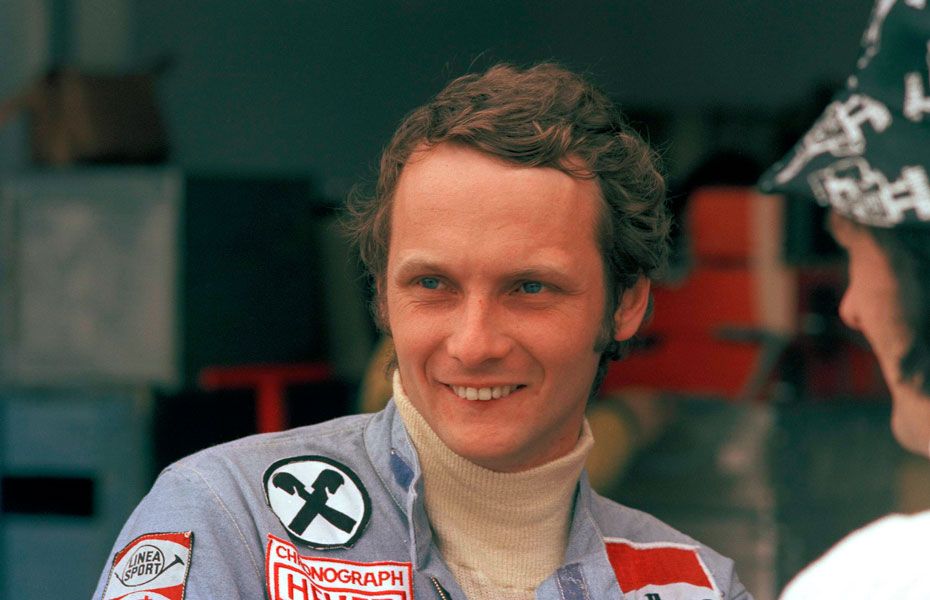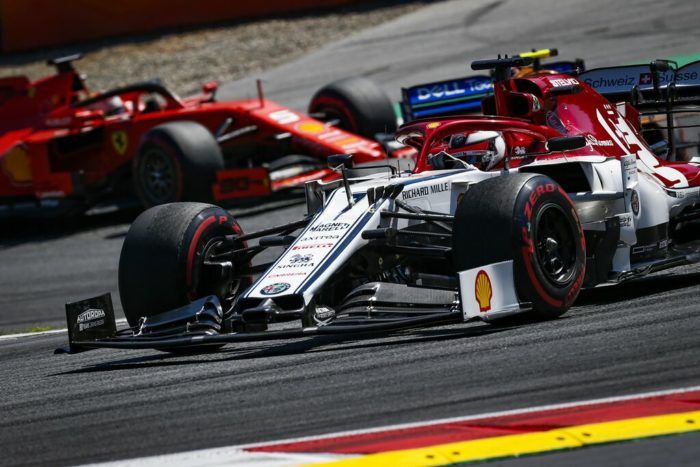10 memorable moments from Niki Lauda’s career
The global motorsport community is today mourning the loss of a legend – three-time Formula 1 World Champion, Niki Lauda has passed away at the age of 70. Let’s take a closer look at the 10 moments that defined the career of the utterly single-minded, uncompromising and unforgettable man.
1. Cutting off contact with his family and taking out bank loans to race
Niki Lauda was born into a wealthy Viennese family on 22nd February 1949. He was expected to go into the family’s paper manufacturing business, but turned his attention to racing instead. This led to a rift, but there was no stopping him from realising his dreams. In fact, he went as far as taking out a life insurance policy to secure a bank loan to buy his way into the March team in 1971. He did the same thing to buy his way into the BRM team in 1973.
2. Signing for Ferrari
During the 1973 season, Lauda was paired with Clay Regazzoni in the BRM team, but Regazzoni left for Ferrari in 1974. A conversation between Regazzoni and Enzo Ferrari led to Ferrari offering Lauda a contract, and he soon found himself alongside his former team-mate in a scarlet car for the start of the 1974 season. Lauda finished second on his debut and won his first race for the team just three races later. He was easily the fastest driver of the season, taking six consecutive pole positions and devoting himself entirely to developing the car.
3. His first World Championship
Although his 1975 season got off to a slow start, Lauda went on a winning streak from Monaco onwards that saw him win four out of the next five races. He wrapped up the World Championship in Monza – a perfectly fitting way to do so considering that the so-called Cathedral of Speed happens to be Ferrari’s home race. He finished the season with a victory at the United States Grand Prix, which was held at Watkins Glen.
4. The Green Hell nearly kills him
Lauda started his title defence in 1976 with a run of four victories in the first six races, and had more than double the number of points of his closest rivals by the time of his fifth victory at the British Grand Prix. However, despite winning a second World Championship appearing to be a mere formality, fate would take a terrible turn as the Formula 1 circus headed to the Nurburgring, also known as the Green Hell.
The most fearsome racing track in the world was 23 kilometres long in the configuration it was used in back in 1976, and Lauda was easily the fastest driver at the circuit at the time, but he encouraged his fellow drivers to boycott the race due to the organisers’ inability to adequately marshal its entire length.
Nevertheless, the race went ahead anyway. It wasn’t long before disaster struck – Lauda took a very fast kink before a corner named Bergwerk. He lost control and hit an embankment. His car promptly burst into flames before colliding with the Surtees-Ford of Brett Lunger. Lunger managed to escape the wreckage of his car, but Lauda was trapped. Drivers Arturo Merzario, Guy Edwards and Harald Ertl, together with Lunger, all stopped their cars to assist him. Merzario managed to pull him from the wreckage, but not before Lauda had damaged his lungs and blood by inhaling the toxic gases from the inferno. He lapsed into a coma in the aftermath of the incident and suffered extensive scarring from the burns to his head.
5. His miraculous comeback just six weeks later
Many believed that Lauda would succumb to his injuries in the weeks following his horrific Nurburgring crash, but just six weeks after, he rocked up in Monza’s paddock for the Italian Grand Prix. Still wearing bandages covering his fresh burns, he raced to an incredible fourth place, only to emerge from his car with his head soaked in blood. It was one of the greatest comebacks made in the history of sport.
He went into the last round of the World Championship, the rain-soaked Japanese Grand Prix, just three points ahead of title rival James Hunt. He pulled out of the race due to the torrential conditions, which he felt were unsafe. He also couldn’t see where he was going because of the damage that his tear ducts had incurred during his Nurburgring crash combined with an inability to blink. He lost out on the title to Hunt by just a single point despite nearly dying and missing two races due to injury that season.
6. Winning his second title with Ferrari, and promptly leaving after doing so
Enzo Ferrari wasn’t very happy with Lauda pulling out of the 1976 Japanese Grand Prix, and the pair endured a fractious relationship during the 1977 season. Lauda was also unhappy with racing alongside new team-mate Carlos Reutemann, who he disliked intensely. The final straw for Lauda was when Enzo Ferrari decided to run the then-unknown Gilles Villeneuve in a third car at the Canadian Grand Prix. He promptly wrapped up his second World Championship at the United States Grand Prix, and left Ferrari immediately after he had done so.
Two seasons at the Brabham team ensued, but the relationship was short-lived – Lauda retired from Formula 1 for the first time in 1979, telling team boss Bernie Ecclestone that he no longer had a desire to “drive around in circles”.
7. Returning to Formula 1 with McLaren – and on a then-unprecedented salary
McLaren’s Ron Dennis coaxed Lauda out of retirement for the 1982 season, offering him an unheard-of $3 million salary. Although title sponsor Marlboro was unconvinced of his ability to win, any doubts were soon put to rest as he won the United States Grand Prix West at Long Beach. He would score a further victory at the British Grand Prix in July.
8. Winning a third world title with McLaren
Lauda was partnered with Alain Prost for the 1984 season, and although the Frenchman was generally faster than him, he took his third World Championship by a mere half-point. Prost won seven races to Lauda’s five, but Lauda’s experience and consistency served him well. During that season, Lauda also became the only Austrian to date to win the Austrian Grand Prix and drove a measured race at the last round in Portugal, racing from 11th to second at the flag and wrapping up the title. He would retire from Formula 1 for good at the end of the 1985 season.
9. Convincing Lewis Hamilton to sign for Mercedes
After dabbling in the aviation business for the better part of 30 years, Lauda was appointed non-executive chairman at the Mercedes Formula 1 team in 2012. He had a significant hand in contractual negotiations with the British driver, who signed on to race for the team ahead of the 2013 season. That relationship has seen Hamilton become the most successful British driver of all time, and he has won four World Championships with the team to date.
10. Being immortalised on the silver screen in “Rush”
The events of the 1976 season were enough for Hollywood luminary Ron Howard to sign on as director of the movie “Rush”, which perfectly captures the intense rivalry between Lauda and James Hunt. The film details Lauda’s early career and the development of the rivalry between the two drivers, culminating in the events of that year’s Japanese Grand Prix. It was a perfectly fitting tribute to one of the most memorable (and successful) drivers ever to sit in a racing car.
Photo: TT








